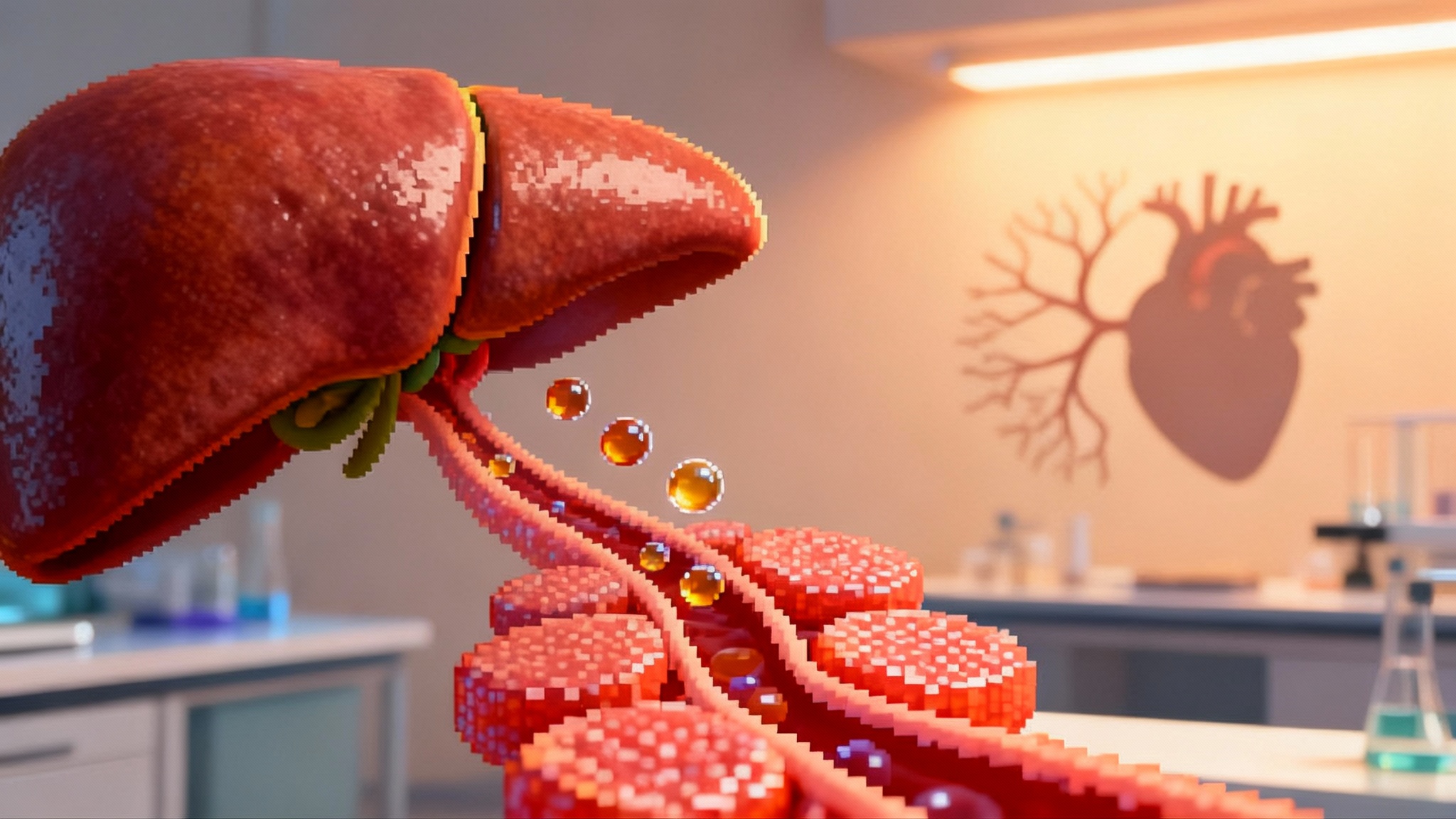Taurine hype, meet reality: NIH’s 2025 Science verdict
A June 5, 2025 analysis from NIH in Science reports that circulating taurine does not consistently decline with age, challenging taurine’s status as an aging biomarker. Here is what that means for supplements, clinical trials, and how to judge real biomarkers.

Taurine’s big moment meets a careful correction
Taurine has been riding a wave of longevity hype. It shows up in energy drinks, capsules, and influencer stacks that promise more vigor and a longer health span. That momentum ran into a sober data check on June 5, 2025, when researchers at the National Institute on Aging reported in Science that taurine in the bloodstream does not reliably fall with age and is unlikely to be a good biomarker of aging. The institute’s summary is plain: age is not the dominant signal in taurine levels, and relationships with function are inconsistent. See the NIH taurine biomarker summary.
If you care about healthy aging, this is a bigger deal than it may look at first glance. Biomarkers are how we measure progress. They decide which drug enters a trial, who qualifies, and whether an intervention is working before hard outcomes like disability or death appear. A biomarker that does not track aging well can waste time and money, or worse, mislead patients. For a look at how blood biomarkers reach clinics, see pTau217 blood tests arrive.
Biomarker versus intervention: two different questions
The new analysis addresses taurine as a biomarker, not taurine as an intervention. Those are separate ideas.
- Biomarker: a measurable signal that reflects a biological state or process. For aging, a useful biomarker should move in a predictable direction with age, add information beyond simple factors like sex and weight, and predict meaningful outcomes such as mobility decline or incident disease.
- Intervention: something you do to change biology. A compound can still be helpful even if its baseline blood level is a poor gauge of your biological age. Vitamin D is an example in another domain where serum levels can be noisy proxies for broad outcomes, yet targeted supplementation can benefit deficient subgroups.
Why the confusion with taurine? In 2023 a widely discussed Science paper reported that taurine levels declined with age in several species and that supplementing taurine extended lifespan in mice and improved multiple health markers in monkeys. That paper helped ignite the supplement boom and the idea that replenishing taurine could reverse an age related deficit. For context on those animal results, see the 2023 Science taurine study.
The new NIH work is not a refutation of every potential benefit of taurine. Instead, it says a simple blood taurine measurement is not a reliable speedometer for the aging process across people and species. That is a critical distinction.
What the June 2025 analysis actually found
The investigators pulled together longitudinal and cross sectional data in humans, nonhuman primates, and mice. Rather than seeing the tidy downward slope that a biomarker of aging should show, they observed that taurine often increased with age or stayed flat. Within person variation over time was often larger than any age related trend. When they tested associations with health and function, the picture was patchy. For gross motor performance and energy balance, relationships were inconsistent; sometimes higher taurine lined up with better function, sometimes worse, often not at all.
Translation for real life: two people of the same age can have very different taurine values for reasons that have little to do with aging. Diet patterns, body composition, exercise habits, and genetics likely dominate. That is not what you want from a single molecule you hope to use as a simple aging dial.
Why rodent lifespan wins rarely translate cleanly
The 2023 mouse results were eye catching. A 10 to 12 percent median lifespan increase grabs headlines. It should also trigger your experimental caution.
- Species differences: mice are powerful models for mechanism, but their life history, metabolism, and microbiome are not human. Effects that are big in mice often shrink in humans because our aging is more complex, slower, and influenced by diverse environments. See how translation challenges play out in our primate to human pivot.
- Controlled environments: lab mice live in standardized settings with controlled diets and minimal pathogen exposure. Interventions that shine under these conditions can fade in the mixed realities of human diets, stresses, and infections.
- Dosing and timing: many rodent studies use doses that are high relative to human intake and start at precise ages. Getting the dose, formulation, and timing right in humans is harder and rarely mirrors rodent protocols.
- Endpoints that are not interchangeable: mouse lifespan and histology can move without corresponding shifts in human function that matter day to day. What you want in people is slower disability, preserved strength and cognition, fewer hospitalizations, and lower mortality.
Rodent data are essential for hypothesis generation. They are not proof that a supplement will extend human health span, especially when the biomarker story does not line up across species.
If taurine is not a clean biomarker, could it still help some people?
Possibly, but the target likely is not everyone. Taurine is a sulfur containing compound involved in bile acid conjugation, osmoregulation, calcium handling, and antioxidation. Intake comes largely from seafood and animal foods, while endogenous synthesis varies by genetics and nutrient status.
Who might plausibly benefit more than average?
- Very low dietary intake: strict vegans may have lower circulating taurine because plants contain little taurine. That still does not make taurine a biomarker of aging. It simply identifies a nutritional context where supplementation could shift physiology.
- Specific metabolic phenotypes: people with poor bile acid conjugation or other metabolic traits may benefit, but this is speculative and needs targeted studies.
- Older adults with low function: if future trials show consistent benefit, subgroups with low muscle function might see gains. Right now the NIH analysis found inconsistent links with strength related measures.
What a credible human trial would need to prove
If researchers want to make a case for taurine as a longevity intervention in humans, the next trials must be rigorous and focused on function, not just blood chemistry. For lessons on designing aging trials that hit meaningful endpoints, see our overview of the senolytics frailty trial design.
1) Population selection
- Middle aged and older adults with at least one deficit likely to improve, such as low gait speed, low grip strength, impaired VO2 max, or mild insulin resistance.
- Prespecified subgroup enrichment for vegans and vegetarians, and possibly for people with low baseline taurine by metabolomics.
2) Outcomes that matter
- Primary outcomes: gait speed over 4 or 6 meters, chair stand test, timed up and go, VO2 max or submaximal fitness, grip strength, and composite frailty indices.
- Secondary outcomes: body composition by DEXA, insulin sensitivity by clamp or validated surrogates, inflammatory markers, sleep quality, cognitive measures sensitive to change, and clinically meaningful events like falls or mobility limitation.
- Biomarker panels: use as exploratory, not primary. Multi marker clocks, proteomic signatures, and metabolomic panels can explain responders versus non responders.
3) Trial mechanics
- Doses that reflect realistic supplement use. Many people take 500 to 3,000 mg per day. Trials should bracket this range and include pharmacokinetics.
- Duration long enough to detect functional change. Twelve to 24 months is more informative than 8 to 12 weeks for mobility and strength.
- Safety monitoring for gastrointestinal effects, interactions with common drugs, and blood pressure or electrolyte changes. Taurine is generally well tolerated, but energy drink co ingredients are not the same as isolated taurine.
- Adherence checks using metabolomics or targeted assays rather than self report alone.
4) Analysis plan
- A priori subgroup analysis for diet pattern, sex, baseline taurine, and training status. The NIH analysis suggests heterogeneity is the rule.
- Responder analysis that defines clinically meaningful thresholds, not just mean differences.
Until trials like this are done, claims that taurine supplements extend human health span are marketing, not medicine.
How to tell real aging biomarkers from marketing claims
Aging is complex, so single molecule silver bullets are rare. To separate signal from sizzle, apply these filters:
- Longitudinal behavior: does the marker change within individuals over time in a direction that fits biology, and is the change larger than normal day to day noise?
- Cross population consistency: does the pattern replicate across cohorts with different diets, ethnicities, and environments, and across species when appropriate?
- Predictive value: does the marker predict future outcomes that people care about, such as mobility decline, hospitalization, dementia, or mortality, after adjusting for age, sex, BMI, and other basics?
- Incremental value: does adding the marker improve risk prediction beyond simple models?
- Responsiveness to interventions: when an intervention improves health span, does the marker move in a way that tracks the improvement?
- Analytical validity: is the test standardized across labs, with known variability, reference ranges, and pre analytic controls?
The new taurine analysis fails the first two tests in many settings, which is why calling it a biomarker of aging is premature.
What this means for your supplement shelf
- Do not use a taurine blood test as your personal aging score. The June 2025 analysis indicates it will not tell you how old your biology is in a reliable way.
- If you are healthy and eat mixed diets, broad taurine supplementation for longevity is unproven. Any benefits are theoretical and may be small.
- If you are vegan or eat little to no animal foods, a modest taurine supplement could be reasonable, especially if you and your clinician identify symptoms or lab features that might benefit. Focus on dose ranges used safely in studies, avoid energy drink sugar and stimulants, and reassess whether you feel and perform better on objective measures.
- Pair any supplement with proven levers. Regular exercise, adequate sleep, blood pressure and glucose control, vaccinations, and avoidance of tobacco move hard outcomes and interact favorably with most nutrient pathways. The 2023 paper also observed exercise related increases in taurine metabolites, reinforcing the priority on training.
- Be skeptical of one number miracles. Aging biogerontology is moving toward composite measures and multi omics panels rather than single metabolites.
The bigger story: progress needs better gauges
The taurine pivot is a healthy sign that aging science is maturing. It is tempting to chase molecules that are easy to measure. It is harder to accept when a tidy story does not survive contact with longitudinal human data. If anything, this shift should speed progress. Removing weak biomarkers keeps the field focused on measures that can guide real therapies.
The path forward looks clear. Use animal work to explore mechanisms and to identify candidate pathways. Test those pathways in humans with designs that prioritize function and clinical events. Demand biomarkers that behave consistently over time and across populations. Expect heterogeneity and plan for it. And never confuse a trending molecule with a trustworthy measure of aging.
Bottom line for readers
- A single taurine measurement is not a reliable readout of your biological age.
- Taurine as a supplement might help specific groups, such as people with very low intake, but it has not proven it can extend human health span.
- If you are considering taurine, do it as part of a broader plan that tracks objective outcomes like fitness, strength, and mobility, and talk with a clinician who understands your medications and goals.
- Save your enthusiasm for interventions with demonstrated effects on function and disease risk. When high quality taurine trials report real world benefits, that will be the time to celebrate.







